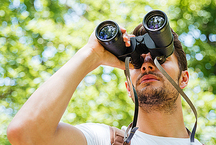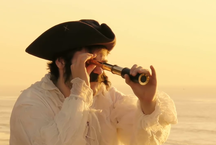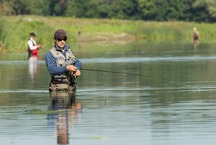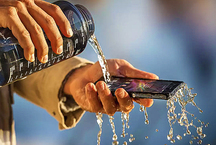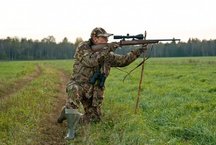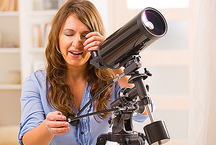Top 10 monoculars

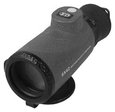


If the question of the weight and size of the wearable becomes critical, you have to save on everything: experienced tourists know perfectly well that even an extra hundred grams will become noticeable during a hike. The same can be said by hunters - when they go hunting long and long, they have to collect equipment no less than tourists, but additionally carry a gun and a supply of ammunition.
So, on what you can "lose weight"? For example, on binoculars: “cutting off” his halves, we get a monocular that is no worse able to handle viewing distant objects. In addition, at large distances, the benefits of binocular vision are negated: stereo tubes are needed here, and in binoculars, the image will still feel flat. In addition, the size of the monocular is smaller, and at a price often the more. So the need to look only with one eye is unlikely to be a serious drawback - the same hunters, who are used to the optical sight on the carbine, do not have any problems with the monocular. Review of the advantages and disadvantages of the best monoculars - in our ranking.
Ranking of the best monoculars in 2018
| Category | A place | Name | Rating | Price |
|---|---|---|---|---|
| The best compact monoculars | 1 | Leica Monovid 8x20 | 9.9 / 10 | 36 100 |
| 2 | Steiner 8x22 Miniscope Monocular | 9.8 / 10 | 7 400 | |
| 3 | BRESSER Nautic 8x25 WP | 9.4 / 10 | 4 990 | |
| The best medium-sized monoculars with a large lens | 1 | LEVENHUK Nelson 8x42 | 9.6 / 10 | 6 990 |
| 2 | LEVENHUK Wise PLUS 8x42 | 9.5 / 10 | 5 060 | |
| 3 | Veber BGD 8x42C | 9.1 / 10 | 3 990 | |
| 4 | KOMZ MP 12x45 | 9.0 / 10 | 4 290 | |
| 5 | Veber Monty 10x50 | 8.8 / 10 | 3 990 | |
| The best monoculars of high frequency | 1 | Veber Monty 18x70 | 9.6 / 10 | 5 550 |
| 2 | Veber 10-25x42 WP | 9.5 / 10 | 5 140 |
The best compact monoculars
|
36 100
As befits, without exaggeration, the legendary brand, we are asked for a great amount for excellent quality: this monocular is one of the most expensive in our stores. Monocular Monovid 8x20 is not only beautiful in appearance (Leica ist Leica doesn’t even find fault with the performance), but also “non-killable”: a durable aluminum body, a hydrophobic coating on the lenses and moisture protection that works up to a five-meter immersion in water. Another advantage of Monovid 8x20 is the presence of a macro nozzle in the kit, which retracts into a separate compartment of an excellent leather case. With its help, the monocular turns into a magnifying glass, which can also be useful on the way. The quality of optics does not complain: the distortion is minimal, excellent aperture. About the "honor of the brand" the company does not forget. Reasonableness in the details is also worth noting: for example, the special design of the latch on the cover allows you to get a monocular completely silent. Main advantages:
Minuses:
|
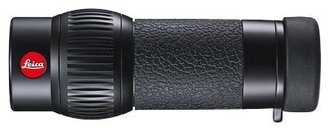 9.9 / 10
Rating
Reviews
A piece, one might say, status is not some incomprehensible Chinese. Well, the quality, of course, is top notch. |
|
Continues our ranking of the best monoculars Steiner 8x22 Miniscope Monocular. This “German” (which, incidentally, is included in the Beretta holding together with another well-known manufacturer of optics - Burris) is much cheaper than its eminent countryman, and immediately attracts the eye with an unconventional layout: even by the standards of the compact “eight-men”, it is small in size, there is always room for it in your pocket. Miniscope Monocular weighs only 80 grams. And we have no complaints about the quality: excellent optics, clear and sharp image. The monocular is protected from fogging, and the warranty from the manufacturer is 10 years. A curious feature of this model is the use of the Sport Auto-Focus in it. In fact, we are not talking about the presence of autofocus? As you might think by name: on the contrary, it’s not necessary to focus the monocular, in principle, it is set to hyperfocal distance. Once you have adjusted its diopter correction under your vision, you will see sharply all objects in sight that are farther than 4 meters up to “optical infinity”. Conveniently? Definitely! And, unlike many low-cost models, it does not have to pay for it with a “soapy” and dark image. The only thing we quibble about is the convenience of holding — by getting used to taking ordinary tubular monoculars in your hand, you can puzzle for a long time, it would be more convenient to unfold the halves of the Steiner and to catch them more cleverly. Main advantages:
Minuses:
|
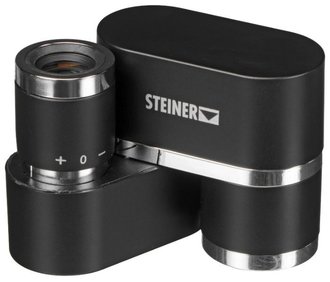 9.8 / 10
Rating
Reviews
On the road does not interfere at all, very small and light. The image is the best for this money. |
|
4 990
The manufacturer has not forgotten about ergonomics: the tides on the body fit comfortably in the average brush. The same solution is used, by the way, on Celestron Nature 10x25 - the Chinese traditionally do not hesitate to clone successful models. But the original from Bresser is more expensive for good reason: here both the optics are better and the focus is more qualitative. Weight can be called moderate - 156 grams. Next to the focus ring - retractable eyecup, which does not interfere at all when not needed. The name clearly hints that the monocular is able to survive a meeting with water without problems. Indeed, the quality of the seal is high, although the hydrophobic coating would also not hurt the lenses. But their enlightenment is quite decent, you cannot call a monocular too dark. The overall impression of the monocular BRESSER Nautic 8x25 WP is a good one, it's worth the money. Main advantages:
Minuses:
|
 9.4 / 10
Rating
|
The best medium-sized monoculars with a large lens
|
6 990
The name for the monocular was chosen by the manufacturer, of course, amusing: although Admiral Nelson actually wore a bandage on his right eye for a long time, only after the battles in Corsica, his “one-eyed” still became a proverb. What do we offer under the name of the famous sailor? Alas, the body here is not metal, but plastic, although plastic is strong enough, and did not save on thickness - it weighs more than metal counterparts. Water protection promised at the level of IPX7 - it would be strange to call the model that is afraid of water after the admiral. In addition to directly optics (three groups of optical elements), a compass and a range finder are built in here, and the compass readings can be seen directly in the eyepiece. The range finder is the simplest, in the form of scratches, by which it is supposed to calculate the distance to objects of a width known in advance. The backlight scale of the rangefinder, as well as the backlight of the compass, no. Nevertheless, we note the rather high quality of this monocular. Of course, there is plenty to choose from for this money, but many will also like Levenhuk - it is more convenient to hold it with a large brush, and the plastic case is more pleasant in the cold. Main advantages:
Minuses:
|
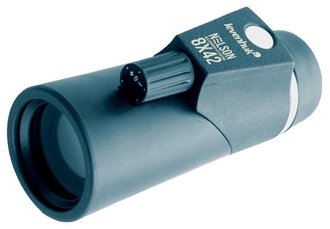 9.6 / 10
Rating
|
|
5 060
The fixed eight-student can be called expensive, especially given the dubious origin of the “Russian-American” brand of the lower price category. Nevertheless, a lightweight and compact monocular is well experienced in falling and floundering in a backpack, the nitrogen content does not allow it to mist inside when temperature changes occur. The eyecup is quite comfortable, although it interferes when the monocular is hanging around the neck. You can use it with your hands comfortably - the original strap has a lining, it does not cut into the back of the hand. A stock of four diopters will suit most people to adjust to their vision. Main advantages:
Minuses:
|
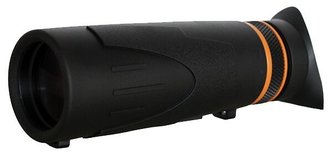 9.5 / 10
Rating
Reviews
Good inexpensive monocular, quite decent value for money, although, of course, China. |
|
3 990
This monocular attracts with a solid look and effective moisture protection, but it costs a lot to pay for it - more than 600 grams for the monocular is already a bit much, and the price makes you think that it makes sense to add and take binoculars. However, BGD 8x42C also has its own chips - in particular, a range finder and a compass are built into it, and the compass readings are visible in the field of view. It’s really convenient for tourists when searching for landmarks, the milliradian rangefinder can also come in handy sometimes. We especially note the good moisture protection - you can cross the mountain rivers with this monocular, not being afraid to remain without optics, and accidentally fall over the side of the boat, collecting wounded cracks, also happens to many. Main advantages:
Minuses:
|
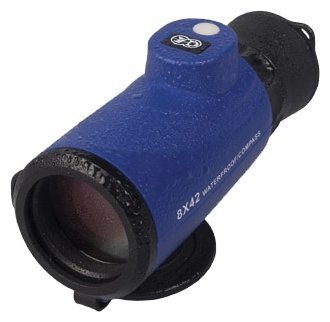 9.1 / 10
Rating
Reviews
Often I take to the hunt - it is difficult to break, and almost nothing. Bathing transfers without any problems. |
|
4 290
The Kazan monocular is Soviet-style brutal (although not in the same way as the Belarusian Zenit PC-AW collimators), is bulky and, which is already there, is not particularly convenient. A few decades ago, its developers decided not to break their heads and did not develop a monocular from scratch, but simply took half of the classic prismatic binoculars. And, although the manufacturer’s website promises us optimistically “free placement in a pocket or handbag,” in practice, putting a nearly 19-inch monocular in there will be a problem. The least fortunate was the illumination of optics: in its “minimal” version, it can be said that it does not, only the more expensive equipment has a “ruby” coating, like on the cheapest Chinese optics. By the way, about China: note that it is the Kazan optics that are littered with all Aliexpress, and all sorts of “Highest quality Baigysh 12X45 Mini Telescope Monocular military pocket HD 8x zoom BK4 HD Optical glass of the Russian army binoculars” very convincingly mimic the original (although definitely scorching "with the BOC marking - the Chinese do not pay attention to the fact that it stands for" Prismatic Binocular with Central Focusing ", and such a designation on a monocular simply cannot be). Should I buy this monocular? The issue is controversial - the monocular is a good one, but for the same money you can find a more compact and better-going model. Please note that the case here is made of rigid and thin plastic, pasted over with film. Main advantages:
Minuses:
|
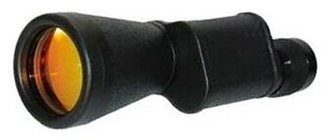 9.0 / 10
Rating
|
|
3 990
A decent aperture of a 50-millimeter lens and a high-quality aluminum body make the ten-time “Monty” quite interesting, but still this model is ambiguous in terms of design. Let's say it can be imagined in the hands of a hipster, who for some reason decided to become a tourist or a hunter - and that, focusing is telescopic, “not like everyone else.” But precisely because of the need to lay out the monocular before using it in practice, it is less convenient than prismatic models - it will require the use of two hands. Although his “elder brother” in another section of the rating of the best monoculars received a good score, here the competition is much stronger, therefore, the place Veber gets the last. Main advantages:
Minuses:
|
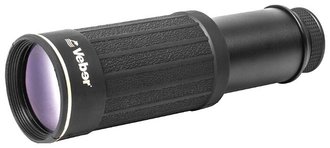 8.8 / 10
Rating
Reviews
Modelka fun, and collected well. The picture is light, clear.But to constantly fold-lay out something else, a prismatic in this plan is easier. |
The best monoculars of high frequency
|
5 550
To improve the aperture optics can be different. You can take expensive glass, cover it with multi-layer enlightenment, which will further increase the price - and now we will get a compact, but not a monocular that does not fit into the budget. And you can simply increase the size of the lenses - and precisely because of this, the 18-fold monocular Veber Monty, whose lens has a diameter of as much as 70 millimeters, gives an excellent image, even in poor light. Of course, the dimensions with weight are appropriate: he “pulls” at 800 grams, and the length in the unfolded state (the optical scheme here is classic - “telescope”) is more than 20 cm. (however, the thread is standard, so that the monocular can be fixed on any other). Body - metal, with trimming. The impressions of the monocular are good - a bright picture with decent sharpness, moderate distortion along the edges of the visual field. But, of course, not everyone will choose it as a hiking option: lighter and more compact models on prisms on a distant campaign will definitely be more convenient. But for lovers of observation, such a model fits well, so in the end, Monty 18x70 with a victory in this section of the rating is rehabilitated by an offensive loss in the previous one. Main advantages:
Minuses:
|
 9.6 / 10
Rating
Reviews
A handy thing, if you take a great interest in observations in one place - put it on a tripod and sit side by side. The image is juicy, at a good level. |
|
5 140
Given the possibility of adjusting the approximation to 25-fold, this monocular can be considered a pocket telescope. And at the same time it is compact, light (300 g), and the rubberized plastic case is durable, and even filled with nitrogen. So the monocular will not take up much space, will not pull away a pocket or neck, and its degree of protection is high enough so as not to be afraid to swim with it during a duck hunt or while crossing a river during a hike. Curiously, the focus limit here is only 0.5 meters. At maximum zoom, the monocular begins to work almost like a microscope. 42mm lens is not bad even by the standards of binoculars, for a compact monocular and at the same time perfectly suited. Main advantages:
Minuses:
|
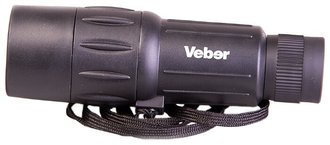 9.5 / 10
Rating
Reviews
An inexpensive monocular with a good zoom is a thing that does not hurt and will not interfere in the hunt! |
Which monocular is better to choose?
As with any optics, here "at the head" lens and prism quality (if we are not talking about "telescopes" of the Veber Monty type, where there are no prisms). A good aperture at dusk will immediately show the difference between a high-quality monocular and a cheap one. It is not difficult to check the quality even in the afternoon - from the shop window try to read the inscriptions on remote signs or car numbers by sorting through several models. The difference will literally see with my own eyes.
The quality of the monocular says and work of adjusting rings - backlash, uneven force stroke immediately give flaws assembly. In addition, backlash can potentially lead to loss of tightness: even if they filled the monocular at the factory with dry nitrogen, the lenses can still begin to mist over time. For observations in comfortable conditions, this is not critical, but it is better to go out to the field with a monocular, where fogging is reliably excluded.
And of course, don't forget ergonomics: the monocular should be convenient for you.
